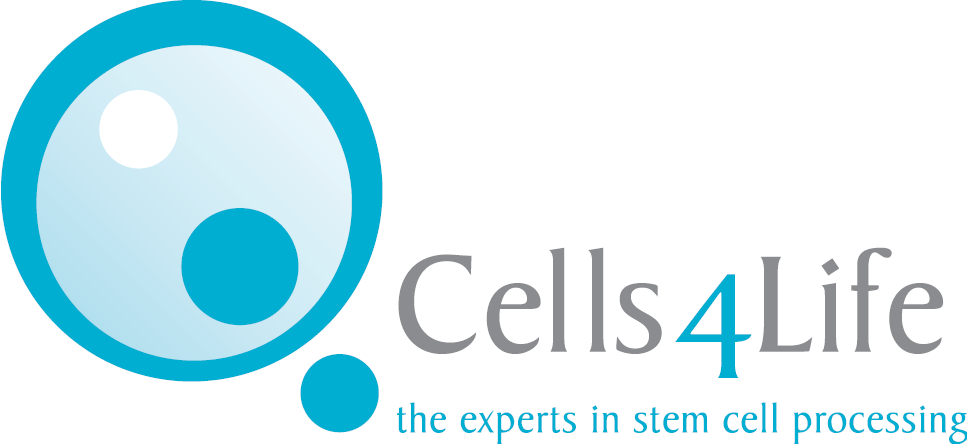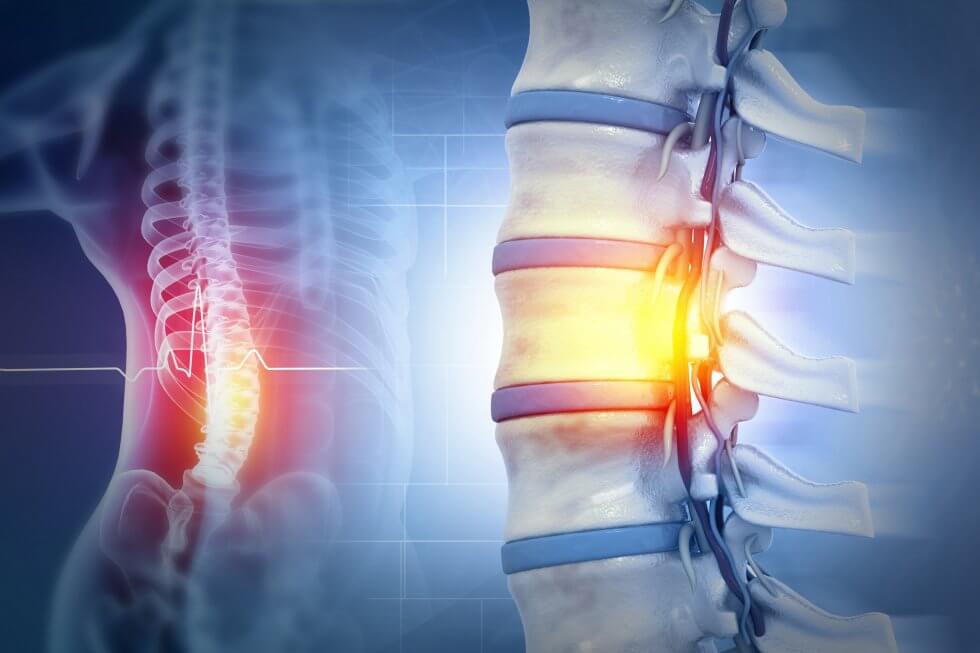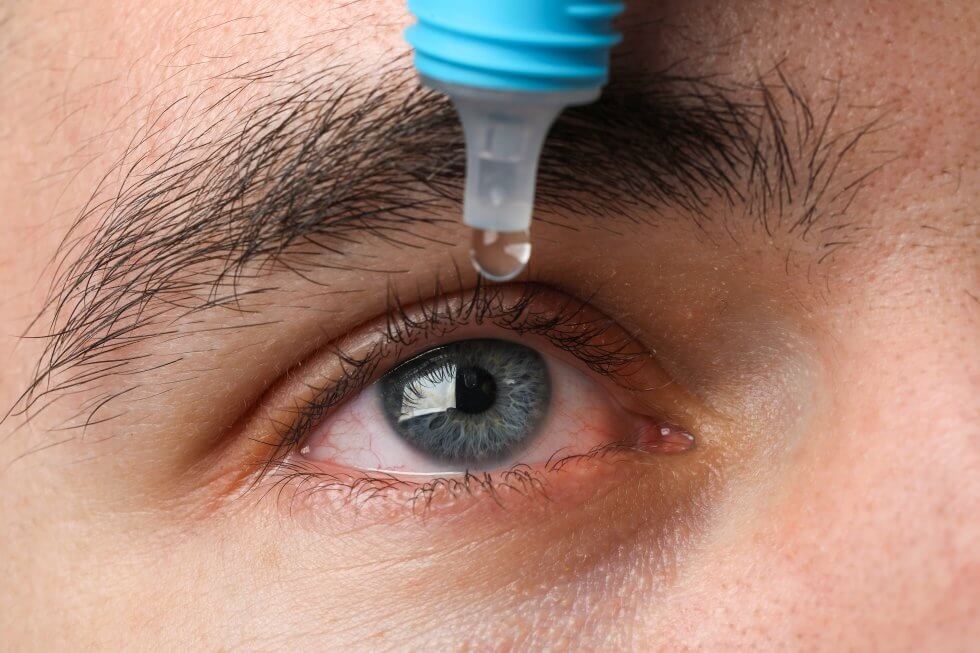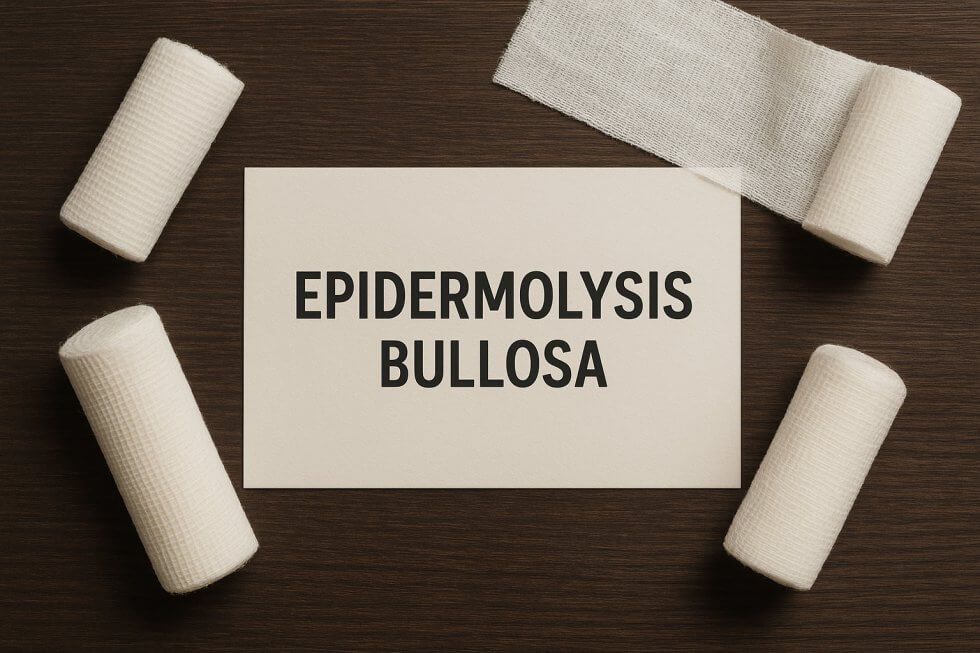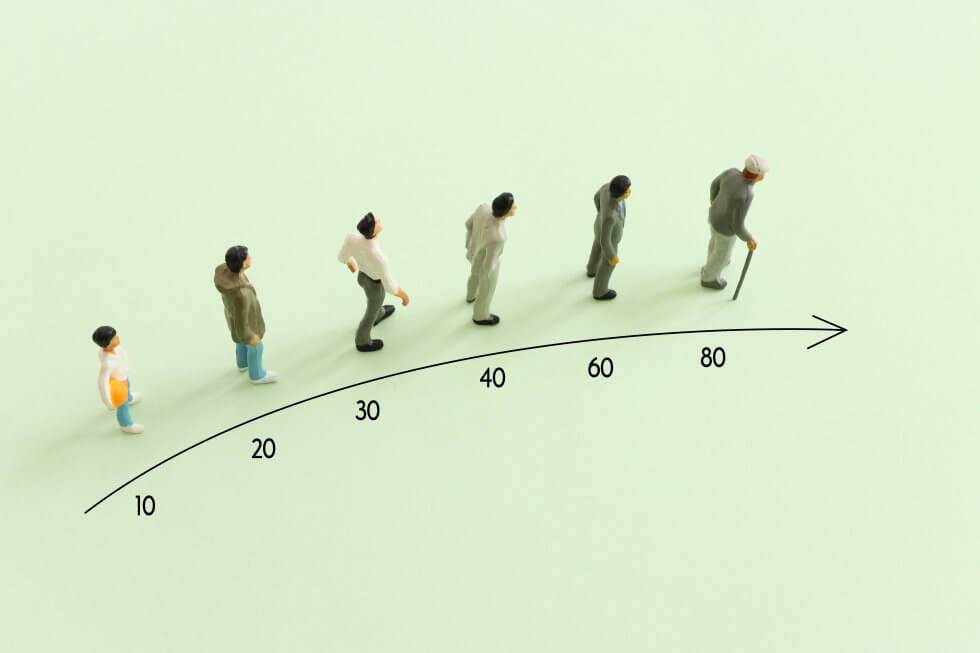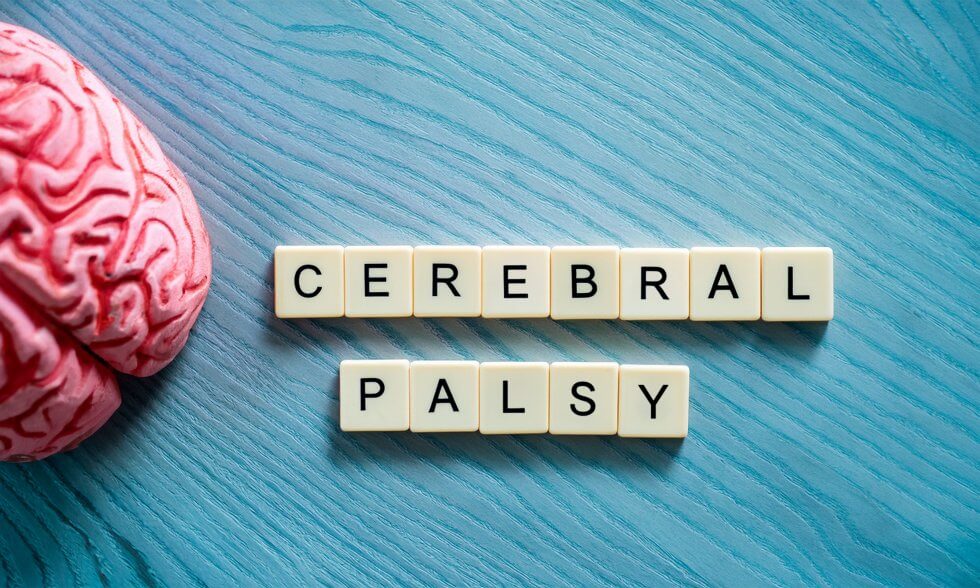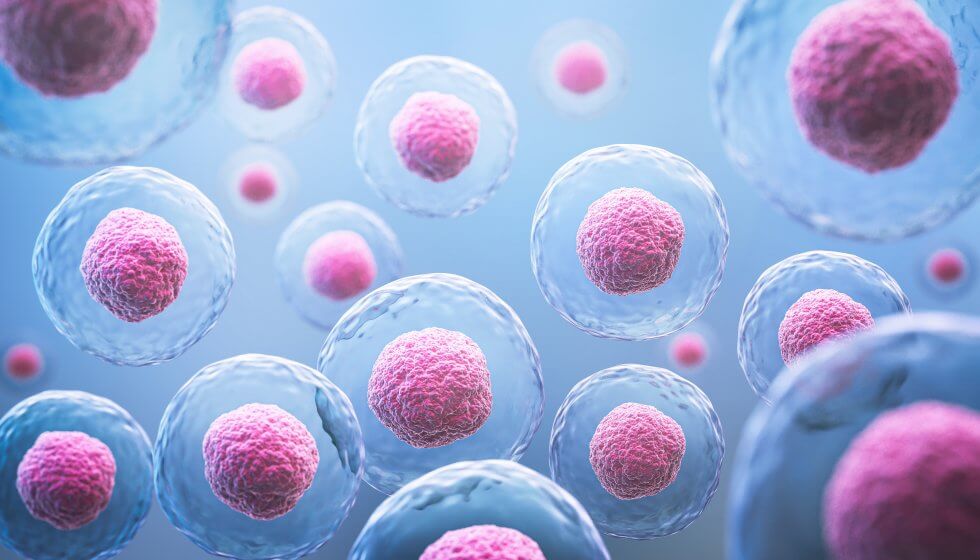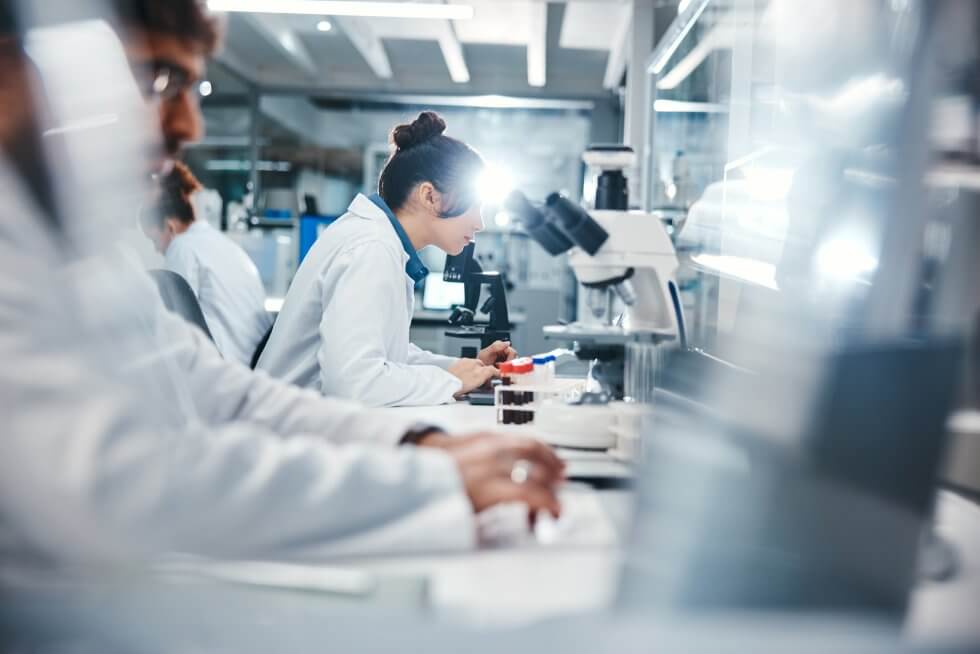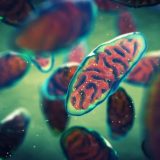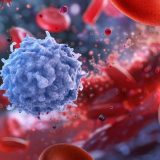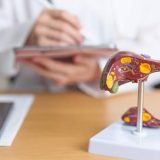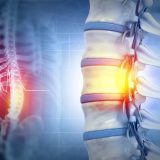Stem Cell Blog
Употребата на матичните клетки од папочна врвца рапидно се зголемува. Пред 10 години крвта од папочна врвца можеше да лекува околу 40 состојби, но денес таа бројка е над 80. Со нетрпение очекуваме нови терапии за болести и нарушувања како што се дијабет, аутизам и мозочен удар, можете да бидете во тек со најновите случувања во регенеративната медицина на нашиот блог за матични клетки.
A recent phase 1 trial has found that umbilical cord stem cell eye drops could help relieve the symptoms of dry eye for patients with a severe, treatment-resistant form of the condition.
What is dry eye?
Dry eye is a chronic condition where either the eyes do not produce enough tears or the tears produced dry up too quickly.[1] Normally, tears spread over the surface of the eyes every time you blink, keeping it moist and protected and washing away any debris.[2] If there aren’t enough tears, your eyes can become irritated and feel very uncomfortable. Severe dry eye can lead to vision problems, infection and damage to the eye.[1]
Dry eye is a fairly common condition, frequently caused by ageing, with up to a third of people aged 65 of over suffering from it. Other issues that can affect the eyes can also cause dry eye. This includes excessive screen use, living or working somewhere overly dry, overuse of contact lenses, allergies or eye surgery. Autoimmune diseases such as lupus or Sjögren syndrome can also be at fault.[3]
Treatment options for dry eye vary depending on the severity. For mild cases of the condition, regular use of non-prescription eye drops (artificial tears) can be enough. For more severe cases, treatment options can include special contact lenses, prescription medicine to decrease inflammation or increase tear production, and even plugging the tear ducts to prevent tears from draining away too quickly.[4]
Unfortunately, however, there remain cases of severe dry eye that are resistant to any treatment, leaving patients with a reduced quality of life and at risk of vision loss.
What did the trial find?
The trial explored eye drops containing mesenchymal stem cells (MSCs) derived from the umbilical cord as a treatment for severe, treatment-resistant dry eye.[5] It included 16 patients with the condition, as well as 15 healthy subjects who received no treatment, but served as a control to highlight and identify the extent of the dry eye symptoms in the treatment group. Five of the participants had dry eye caused by Sjögren syndrome, which reduces tear production and often causes more severe symptoms than non-Sjögren dry eye.
Patients used the MSC eye drops twice a day for two weeks, in both eyes. Researchers assessed how well the treatment worked based on patient-reported eye discomfort, as well as objective tests to determine the health of the cornea, levels of tear production, and how quickly tears evaporated. They also evaluated how well meibomian glands worked: these glands are responsible for producing the oily outer layer of tears that keep them from evaporating too quickly. Safety was rigorously monitored throughout the trial.
The treatment had positive results in patients, significantly easing most signs and symptoms of dry eye by the four-week follow-up visit. The improvements were particularly significant in terms of tear production, as well as less damage to the surface of the eye. Meibomian glands also worked better and were found to be less obstructed. Moreover, the quality of tears improved and discomfort lessened, though only reaching statistical significance in non-Sjögren patients.
Tear composition analysis offered potential insights into how the treatment worked. After the treatment, tears had lower levels of inflammatory proteins, as well as higher levels of Mucin 5AC, a protein which helps with the lubrication of the surface of the eye. This suggests that it is the anti-inflammatory properties of the umbilical cord MSCs that are working to relieve symptoms.
The healing potential of umbilical cord stem cells
Because this was a first-in-human, small scale preliminary trial, more research is needed before this treatment for dry eye can become readily available. Still, the promising results underscore the strong potential of umbilical cord stem cells for the treatment of not just dry eye, but also other conditions and diseases that currently have no real cure.
To learn how you could preserve your baby’s umbilical cord for potential future treatment use should they ever need it, fill in the form below to receive our free guide.
References
Positive early results have emerged from a clinical trial testing an umbilical cord tissue stem cell therapy for epidermolysis bullosa (EB), a currently incurable group of disorders which causes extremely fragile skin. The therapy has shown promise in relieving symptoms and reducing disease activity in children with a severe form of EB.[1]
What is epidermolysis bullosa?
EB is a group of inherited genetic disorders that results in easy blistering of the skin and, in many cases, mucous membranes, such as the lining inside the mouth. With EB, painful blisters or open sores will form with even the slightest friction, even from seemingly trivial things such as clothes rubbing against the skin.
This extreme skin weakness means that everyday things most of us don’t think about can be very difficult and painful for people with EB. What’s more, there is currently no cure available for EB.[2] Because of this, patients and their families have to be constantly careful, avoiding anything that might hurt the skin as much as possible. Dealing with the blisters and sores that do happen, to avoid them spreading further or causing infections, is also a painful, time-consuming daily task.[3] The blisters need to be lanced and dressed, in order to avoid them causing larger, painful wounds that take a long time to heal.[2] Itching is also very common, with patients describing an unbearable, constant itch. Moreover, relief from the itching is difficult, as scratching, too, can tear the skin, create blisters and make existing wounds worse.[4]
Depending on the type of EB and severity of the disease, sufferers may be left with deformities from scar tissue, such as fused fingers or toes, and limited motion. If blisters form inside the mouth or in the oesophagus, eating can also become an issue. Skin cancer and sepsis are potentially lethal consequences.[5]
There are four main types of EB, varying in severity: EB simplex, dystrophic EB, junctional EB and Kindler syndrome.[3] Among these, recessive dystrophic EB (RDEB) is one of the most severe types, and in fact one of the most severe hereditary genetic disorders as a whole[6]. In other words, as the name implies, it is recessively inherited, with two parents who are both asymptomatic carriers of the disease having a one in four chance of having a child affected by it.[7] Patients with this type of EB also have a higher chance of developing skin cancer, and their life expectancy is just age 30.[8]
Trial structure and objectives
The study on the cord tissue stem cell therapy for EB, called MissionEB, focused on children with the two most severe types of RDEB, designated “intermediate” and “severe” in disease classification. It was led by the EB team at Great Ormond Street Hospital[1], one of the four centres of excellence for EB treatment in the UK[9].
A prior small-scale clinical trial had found benefits from a therapy consisting of mesenchymal stem cells (MSCs) derived from bone marrow, with effects lasting 3-6 months.[10] Following this, researchers posited that MSCs derived from umbilical cord tissue (UC-MSCs) could prove more effective.[11] Therefore, the study aimed at testing whether repeated doses of UC-MSCs could be a safe and effective treatment for severe RDEB.
The study enrolled 30 children, and was a randomised, placebo controlled, double blinded cross-over trial. In other words, patients were randomly assigned to the treatment or placebo group. Furthermore, neither the patients nor the researchers were aware which study group each patient was in. After an initial assessment at 9 months, groups were then switched, with the original treatment group receiving placebo and vice versa.[11][12]
Preliminary results of the study show that the treatment improved patients’ quality of life, reducing itch and pain. The range of improvements was broader for patients with less severe RDEB; children younger than 10 also saw improved skin integrity and reduced disease activity. In interviews, both the children and their care givers correctly identified whether they were receiving the treatment or the placebo.[11][1]
An open-label extension study is now ongoing. In this study, patients who completed the original MissionEB trial will receive three cycles of the treatment, at zero, four, and eight months. The severity of their disease will then be assessed at four, eight, and twelve months.[1]
The future of cord tissue stem cell therapy for EB
Following an agreement with Great Ormond Street Hospital for use of the data, biotechnology company Inmune Bio is marketing the treatment as CORDStrom. The company intends to seek approval for the treatment in the US, UK and EU in the nearby future.[11]
At Cells4Life, we have previously released a cord tissue sample for the treatment of epidermolysis bullosa. More in general, studies like these show the incredible potential of umbilical cord stem cells as treatment for rare, disabling diseases. To learn more about how you could preserve these powerful stem cells for your baby and family, fill in the form below to receive your free guide to cord blood banking.
References
[8] EB Research Partnership. (2025). Dystrophic EB (DEB). https://www.ebresearch.org/dystrophic.html
[11] Cure EB. (2025). Mission EB. https://cure-eb.org/research-portfolio/mission-eb/
Getting older is not just about grey hair and wrinkles. The body can deteriorate, losing muscle tone and strength, making daily life activities more difficult and tiring. What’s more, the immune system also weakens, making older adults more likely to get sick and less able to fight off infection. Because of this, preventing or reversing the effects of ageing is the key to lifelong health. Although lifestyle changes and exercise can help offset some of these effects[1], researchers are increasingly looking at umbilical cord stem cells for their protective and restorative potential.
Protecting the immune system: the thymus and spleen
The thymus and spleen are both part of the lymphatic system, which itself is part of the body’s immune system. The thymus is where a type of white blood cells, called T cells, fully mature; these cells control the body’s immune response and attack infected and cancerous cells. The spleen, on the other hand, mainly acts like a filter, removing old or damaged blood cells from the body. It also helps produce white blood cells and destroy bacteria and viruses.[2] Changes in the thymus and spleen during a person’s lifetime mean the immune system gradually becomes less effective, making the person more vulnerable to many illnesses, including infections and cancer.[3][4]
A recent study, performed on a mouse model of ageing, showed that mesenchymal stem cells derived from umbilical cord tissue (UCT-MSCs) could prevent ageing-related changes in the thymus and spleen. The study compared three groups of mice: a control group, an induced-ageing group which received no treatment, and an induced-ageing group which also received treatment with human UCT-MSCs. Upon analysis, the thymus and spleen in the UCT-MSC treatment group were found to more closely resemble those in the control group in size, structure, and potential functionality. Those in the ageing group with no treatment, on the other hand, were significantly atrophied. Moreover, mice in the UCT-MSC treatment group also showed lower levels of inflammation and oxidative stress, lower expression of ageing-related genes, and an improved population of beneficial bacteria in the digestive system.[5]
Strengthening muscles and easing frailty
Losing some muscle mass and strength is a natural part of ageing. In some people, however, the loss becomes so significant the muscles atrophy, a condition called age-related sarcopenia. This condition can make even the simplest task, such as getting out of chairs or climbing stairs, quite difficult. Sarcopenia can also be a complicating factor leading to frailty, which increases the risk of falls, broken bones, disability and death.[6][7] Here, too, UCT-MSCs could prove beneficial as a treatment.
A pre-clinical study conducted on mice, specifically on sarcopenia, found that treatment with human UCT-MSCs could counteract muscle ageing. Mice in the treatment group showed improvements in grip strength and performed better in a fatigue test compared to the group which received no treatment. Furthermore, muscle analysis and comparison between groups showed restored muscle functionality in the treatment group.[8]
A different, phase 1/2 clinical trial on elderly patients with diagnosed frailty reported similar results. The study was randomised and double-blinded, and aimed to test both the safety and the effectiveness of UCT-MSC treatment. After a first, baseline evaluation, patients were randomly assigned to either the treatment or the control group. Following two infusions of either UCT-MSCs or placebo at days 1 and 30, they were then evaluated with several follow-up visits over the course of six months. Compared to the control group, patients treated with UCT-MSCs showed improvements in general quality of life, grip strength and walking ability.[9]
Protecting the future, today
Although more research is definitely needed, studies such as these highlight the strong regenerative potential of stem cells from the umbilical cord.
Babies being born today could be part of the first generation to live beyond 100. Having access to their own umbilical cord stem cells could help them gain access to anti-ageing treatments and remain in good health.
To learn more about how to preserve this powerful resource for your baby, as well as more potential uses for umbilical cord and placenta stem cells, complete the form below to request your free guide.
References
A new study on cell therapy for cerebral palsy has, for the first time, directly compared the efficacy of two different treatments. Although more research is needed, the study’s results offer valuable insights for future clinical trials tackling this challenging disorder.
The challenges of cell therapy for cerebral palsy
Over the past two decades, cell therapy has emerged as a promising treatment for cerebral palsy. In particular, mononuclear cells from cord blood (UCB-MNCs) and mesenchymal stem cells from cord tissue (UCT-MSCs) have proven to be a safe and effective therapy. Many clinical trials have obtained results showing improvements in patients’ motor function through these cells’ anti-inflammatory, neuroprotective and regenerative properties.
However, efforts to pinpoint the best treatment method have been stymied by significant variations in trial parameters. Differences from study to study can include the type and severity of cerebral palsy, the age of the patients, the cell type, dose and delivery method, whether the study is open-label or blinded, and even the methods and time periods used to monitor improvement. Consequently, no two studies are alike, and results cannot be directly compared.[1][2]
Study methods and goal
The new study, conducted in Iran, is a pooled analysis of the results of two studies, one on UCB-MNTs and one on UCT-MSCs. Both studies were conducted in the same research centre; moreover, to aid in the comparison, the research methodology and other variables were kept the same as much as possible.[3][4][5]
The study patients were aged 4-14 and had spastic cerebral palsy with white matter lesions. After eligibility screening, 108 patients were randomly assigned to the two treatment arms or a control group. Treatment was done via intrathecal (into the spinal fluid) injection, with the control group receiving a sham procedure instead. Researchers then assessed patients’ motor function, quality of life, disability and spasticity after 1, 3, 6 and 12 months.
Both individual studies were double-blinded. Furthermore, all statistical analysis, both for individual studies and for the final pooled comparison, was performed by a blinded statistician.
The individual studies aimed to confirm that UCB-MNCs and UCT-MSCs are a safe and effective treatment for cerebral palsy. Following that, the pooled study analysis compared the effects of the UCB-MNC treatment to those of the UCT-MSC treatment across the study period.
Study results
Both the UCB-MNC treatment and the UCT-MSC treatment reported positive results over time when compared to the control group. Patients in both groups showed improvement in gross motor function and quality of life, as well as reduction in disability and spasticity.[4][5]
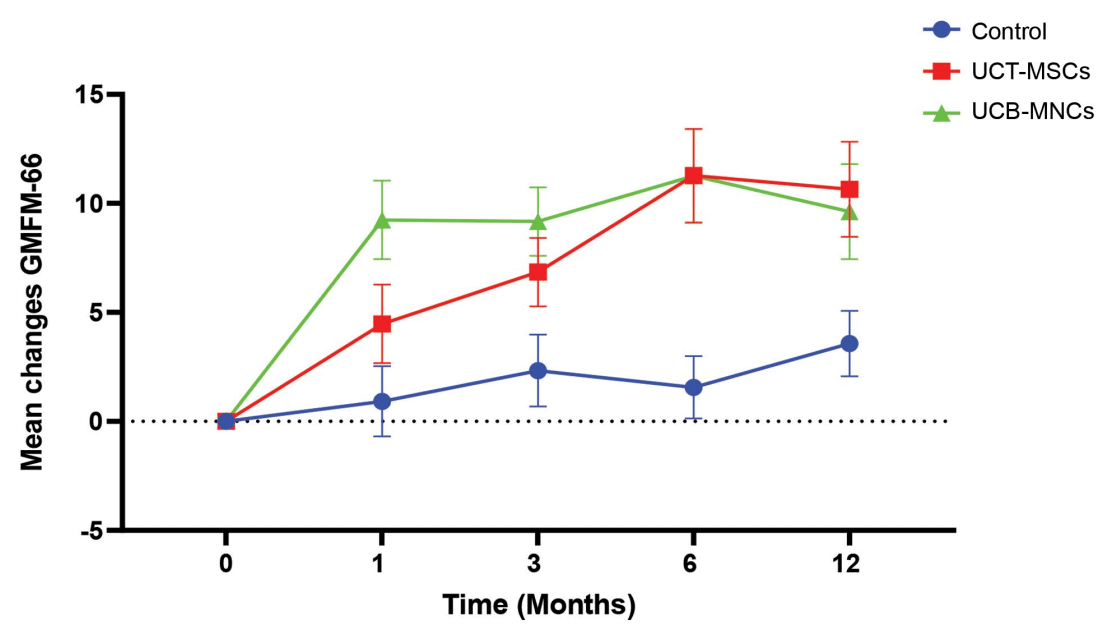
Figure 1. A comparison graph of the two different treatment groups and the control group.[3]
As the figure above shows, researchers found that the UCB-MNC treatment group showed stronger improvements in motor function early on. However, both the UCB-MNC and UCT-MSC groups achieved the same level of improvement at 6 months post treatment. At twelve months after treatment, there was some gradual deterioration of the improvements; however, researchers noted that UCT-MSCs did seem to result in more sustainable changes, with patients seeing less deterioration compared to the UCB-MNC group.[3]
Due to this deterioration, researchers posit that repeated doses at regular intervals may be the best route to continued improvement.[1] They also suggest that future trials should investigate treatments combining both UCB-MNCs and UCT-MSCs, as it may prove more effective than individual ones.[3]
The future of medicine
Researchers stress that this study is only a start, and further comparative trials and research are needed. Although both UCB-MNCs and UCT-MSCs offer positive results, there is still no certainty on which cell type and source will prove most effective treatment. This is true not only for cerebral palsy, but also for other illnesses and diseases for which an effective treatment is still being sought.
This uncertainty highlights the importance of comprehensive stem cell banking. By storing as many stem cell sources as possible, you could equip your baby and family with the broadest range of options for future regenerative therapies.
To find out how you could preserve both cord blood and tissue, along with amnion and placenta, for your baby’s potential future use, fill in the form below to request your free guide.
References
Recent research indicates that umbilical cord exosomes have huge potential in the field of regenerative medicine.
In this blog we’ll explore what exosomes are, where they’re found, and how they could be used in developing new, life changing therapies for a range of conditions.
What are exosomes?
Exosomes are nano-sized particles that contain key biomolecules like proteins and lipids and travel between cells like messengers, regulating numerous biological processes including inflammatory responses.
Initially thought to be responsible for conveying waste away from cells, in recent years numerous trials and studies have explored their intercellular communicatory function and the potential this offers in a range of therapeutic applications.
Where are exosomes found?
Exosomes are produced by virtually every cell in the body, including stem cells.
Excitingly they can be derived from the mesenchymal stem cells that exist within both umbilical cord blood and umbilical cord tissue.
Due to the low immunogenicity (the likelihood of being attacked by the immune system when transplanted) of mesenchymal stem cells derived from the umbilical cord, along with their non-invasive harvest procedure and ease of expansion in vitro, umbilical cord MSC exosomes (UC-MSC-Exo) are well suited for research and potentially therapeutic purposes. [1]
What can umbilical cord exosomes do?
Below are a few examples of recent trials utilising UC-MSC-Exo in the treatment of various conditions.
Heal wounds and repair nerves
A 2022 study investigating the use of UC-MSC-Exo in treating cutaneous nerve damage and wound healing showed that exosomes have the ability to promote skin and nerve regeneration.
Studied in vitro, researchers found that UC-MSC-Exo promoted the migration and proliferation of skin fibroblasts – cells that play a key role in forming connective tissue.
Additionally, UC-MSC-Exo were also found to promote the secretion of nerve growth factors by fibroblasts, suggesting that exosomes may enhance wound healing by promoting nerve repair.
Tested in vivo in a mouse model, the study showed that the wounds of the treatment group who received UC-MSC-Exo healed faster than the wounds of the group who received a control medium.
The study concluded that UC-MSC-Exo produced therapeutic effects by promoting skin and nerve regeneration. [2]
Slow the progress of osteoarthritis
Another study from 2022 demonstrated that exosomes derived from the umbilical cord have the potential to be used as a treatment method for osteoarthritis (OA).
Using a rat model, researchers undertook a surgical procedure designed to recreate the effects of knee osteoarthritis. They then administered injections of either UC-MSC-Exo or saline solution. After 8 weeks, knee samples were taken to assess the progression of the disease.
Researchers discovered that in the knees of rats who had received injections of exosomes the progression of OA had been halted and severe damage to knee cartilage prevented.
One of the key reasons behind this, the researchers found, was that the exosomes promoted the migration and proliferation of chondrocytes – cells that make up cartilage. They also found that the exosomes helped to inhibit the secretion of pro-inflammatory factors, as well as regulate immune responses; contributing factors in cartilage regeneration. [3]
Alleviate liver damage and disease
A study from 2020 showed that exosomes derived from umbilical cord mesenchymal stem cells were able to secrete the molecule miR-455-3p which helped to suppress inflammatory immune responses and inhibit signalling pathways in order to improve liver damage. [4]
Another study showed that exosomes derived from umbilical cord mesenchymal stem cells have antioxidant effects.
A contributing factor to the progression of liver damage, oxidative stress occurs when there is an imbalance in free radicals (unstable oxygen molecules) and antioxidants in the liver. Oxidative stress can lead to what’s known as apoptosis – programmed cell death. [5]
By using a mouse model, researchers were able to ascertain that injections of UC-MSC-Exo inhibited apoptosis in liver injury, reversing the fallout from oxidative stress. [6]
Promote heart repair
There have been several studies indicating that exosomes derived from umbilical cord mesenchymal stem cells have the ability to reduce myocardial injury – damage to heart tissue.
A study from 2018 showed that UC-MSC-Exo may have the ability to promote the expression of Smad7, a protein which aids in myocardial protection by blocking certain signalling pathways.
Researchers believed this could be the mechanism underlying exosomes’ ability to inhibit apoptosis, promote angiogenesis (the formation of new blood vessels) and improve cardiac function following acute myocardial infarction. [7] [8]
Rejuvenate older stem cells
An especially intriguing study from 2020 also showed that exosomes derived from umbilical cord mesenchymal stem cells could help in myocardial repair by rejuvenating the activity and function of mesenchymal stem cells in older patients.
Because heart conditions mainly affect older patients, the risk of immunogenicity associated with allogeneic stem cell transplants in helping to treat heart damage is a potential risk. This leaves autologous stem cell transplants – using stem cells from the patient themselves – as an available treatment option. However, due to age and cardiovascular risk factors, these autologous stem cells can be limited in their usefulness.
What this study found, however, is that UC-MSC-Exo have the ability to ameliorate the senescence of older mesenchymal stem cells and renew their biological activity, such as the potential to differentiate into cartilage, bone, and fat cells.
In effect this means that umbilical cord exosomes could help in restoring the regenerative capacity of mesenchymal stem cells in a range of therapies for patients who need them most. [9]
Exosomes and cord blood banking
As some of these trials demonstrate, exosomes are a hugely exciting field of regenerative medicine, and their therapeutic potential is only just beginning to be understood.
Most exciting is that these exosomes can be found in umbilical cord blood and tissue which, although usually thrown away as medical waste, can be stored so that your baby has access to their own stem cells that they can use in future therapies.
To learn more about the potential of umbilical cord stem cells and exosomes, contact our specialist team on 01444 873 950 – they’ll be more than happy to help answer any questions you may have.
In the meantime, why not fill out your details below for a free Welcome Pack containing everything you need to know about storing stem cells for your baby.
References
[1] Zhang, N., Zhu, J., Ma, Q. et al. (2020) Exosomes derived from human umbilical cord MSCs rejuvenate aged MSCs and enhance their functions for myocardial repair. Stem Cell Res Ther 11, 273. https://doi.org/10.1186/s13287-020-01782-9
[2] Zhu, Z., Zhang, X., Hao, H., Xu, H., Shu, J., Hou, Q., & Wang, M. (2022). Exosomes Derived From Umbilical Cord Mesenchymal Stem Cells Treat Cutaneous Nerve Damage and Promote Wound Healing. Frontiers in cellular neuroscience, 16, 913009. https://doi.org/10.3389/fncel.2022.913009
[3] Li, P., Lv, S., Jiang, W., Si, L., Liao, B., Zhao, G., Xu, Z., Wang, L., Zhang, J., Wu, H., Peng, Q., Li, Z., Qi, L., Chi, G., & Li, Y. (2022). Exosomes derived from umbilical cord mesenchymal stem cells protect cartilage and regulate the polarization of macrophages in osteoarthritis. Annals of translational medicine, 10(18), 976. https://doi.org/10.21037/atm-22-3912
[4] Shao, M., Xu, Q., Wu, Z., Chen, Y., Shu, Y., Cao, X., Chen, M., Zhang, B., Zhou, Y., Yao, R., Shi, Y., & Bu, H. (2020). Exosomes derived from human umbilical cord mesenchymal stem cells ameliorate IL-6-induced acute liver injury through miR-455-3p. Stem cell research & therapy, 11(1), 37. https://doi.org/10.1186/s13287-020-1550-0
[5] Li, S., Tan, H. Y., Wang, N., Zhang, Z. J., Lao, L., Wong, C. W., & Feng, Y. (2015). The Role of Oxidative Stress and Antioxidants in Liver Diseases. International journal of molecular sciences, 16(11), 26087–26124. https://doi.org/10.3390/ijms161125942
[6] Jiang, W., Tan, Y., Cai, M., Zhao, T., Mao, F., Zhang, X., Xu, W., Yan, Z., Qian, H., & Yan, Y. (2018). Human Umbilical Cord MSC-Derived Exosomes Suppress the Development of CCl4-Induced Liver Injury through Antioxidant Effect. Stem cells international, 2018, 6079642. https://doi.org/10.1155/2018/6079642
[7] Wang, X., Zhao, Y., Sun, L., Shi, Y., Li, Z., Zhao, X. … Zhu, W. (2018). Exosomes derived from human umbilical cord mesenchymal stem cells improve myocardial repair via upregulation of Smad7. International Journal of Molecular Medicine, 41, 3063-3072. https://doi.org/10.3892/ijmm.2018.3496
[8] Zhao, Yuanyuan, Sun, Xiaoxian, Cao, Wenming, Ma, Jie, Sun, Li, Qian, Hui, Zhu, Wei, Xu, Wenrong. (2015) Exosomes Derived from Human Umbilical Cord Mesenchymal Stem Cells Relieve Acute Myocardial Ischemic Injury, Stem Cells International, 761643, 12 pages, 2015. https://doi.org/10.1155/2015/761643
[9] Zhang, N., Zhu, J., Ma, Q. et al. (2020) Exosomes derived from human umbilical cord MSCs rejuvenate aged MSCs and enhance their functions for myocardial repair. Stem Cell Res Ther 11, 273. https://doi.org/10.1186/s13287-020-01782-9
Last month researchers at The Parent’s Guide to Cord Blood Foundation compiled a report about how perinatal stem cells were being employed in clinical trials from 2019 through to the end of 2023. [1]
Perinatal stem cells are those which are collected in and around the perinatal period: the period immediately before and after birth.
These include stem cells from cord blood, cord tissue, the placenta and amnion.
In this blog, we’ll summarise some of their key findings and discuss what they mean in deciding to store stem cells for your baby.
Increase in the number of perinatal stem cell trials, despite COVID-19
In their report, researchers led by Dr Frances Verter point out how clinical trials using umbilical cord mesenchymal stem cells in particular reached a peak in 2020 and 2021, the result of accelerated research to help combat the COVID-19 pandemic.
They estimate that during the pandemic (2020-2022), nearly 41% of all advanced cellular therapy trials for COVID-19 relied on perinatal stem cells.
While the number of trials declined by almost half in the years that followed – to be expected, considering the impact of the pandemic on trial numbers – the researchers found that during the two years since their last report in 2021, the cumulative number of trials for advanced cellular therapies using perinatal stem cells increased by 17%.
This shows that the number of clinical trials using perinatal stem cells has not only returned to pre pandemic levels, but has actually increased, demonstrating a sustained interest in the clinical and therapeutic application of perinatal stem cells.
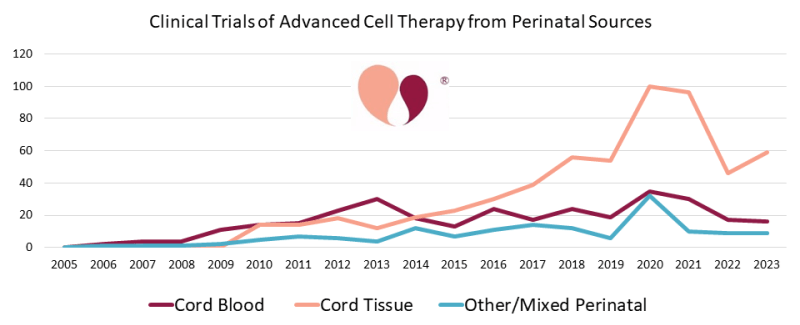
(graph courtesy of The Parents Guide to Cord Blood Foundation, https://parentsguidecordblood.org/en/news/2024-update-how-many-clinical-trials-employ-perinatal-sources-stem-cells)
Trials for stem cells derived from placenta and amnion
Dr Verter and her team also point out that there are increasingly prominent roles for perinatal stem cells derived from a variety of sources beyond cord blood and cord tissue, namely: placenta and amnion.
Of the 402 clinical trials focusing on the use of mesenchymal stem cells derived or expanded from perinatal tissues, 9% utilised either placenta, amniotic membrane, or a mixture of a number of different perinatal stem cell sources. For reference, only 4% of trials derived MSCs from cord blood.
These numbers suggest that the placenta and amnion are becoming increasingly pivotal to the development of advanced cellular therapies using perinatal sources of stem cells, with the majority of these MSC trials focusing on COVID-19, neurological conditions, orthopaedic conditions and auto-immune disorders.
Cord tissue trials outpace cord blood trials
Since their last report on the cumulative number of trials through to the end of 2021, Dr Verter and her team found that in the years since, through to the end of 2023, there were 117 new trials utilising cord tissue and 40 new trials utilising cord blood. [2]
A key source of mesenchymal stem cells – which have the ability to differentiate into other specialised cell types such as muscle, nerve, and cartilage cells – cord tissue has once again shown itself to be at the forefront of trials utilising perinatal stem cells.
Of the 402 perinatal stem cell trials using MSCs, 87% of these utilised MSCs derived from cord tissue alone.
Considering that during the period from 2019-2023, over 75% of all perinatal stem cell trials were focused on the application of mesenchymal stem cells, cord tissue continues to be a vital source of the kind of stem cells that are driving current therapeutic interest in the application of stem cells from perinatal tissues.
Wide array of medical uses for perinatal mesenchymal stem cells
Another significant finding in this report is the sheer array of diagnosis categories that perinatal mesenchymal stem cells are being trialled for.
While around 45% of trials using perinatal mesenchymal stem cells focused on how they might be applied to treat COVID-19 and other respiratory illnesses, as well as neurological and orthopaedic conditions, another 46% of the total number of perinatal mesenchymal stem cell trials were divided across a wide range of medical diagnoses.
These medical diagnoses spanned trials for auto-immune disorders, the treatment of different forms of wounds, liver conditions, metabolic and genetic conditions (such as Krabbe disease and Hurler’s syndrome), cancers and blood cancers, and cardio-vascular conditions.
These figures suggest not only an increase in the number of perinatal mesenchymal stem cell trials, but also a broad spectrum of possible treatment applications, making them invaluable in the development of future advanced cellular therapies.
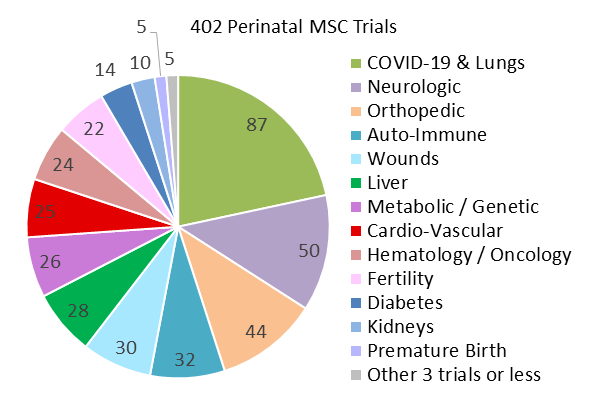
(graph courtesy of The Parents Guide to Cord Blood Foundation, https://parentsguidecordblood.org/en/news/2024-update-how-many-clinical-trials-employ-perinatal-sources-stem-cells)
What does this mean for cord blood banking?
If you’re considering storing stem cells for your baby, the findings of this report are encouraging.
The sustained growth in clinical trials using perinatal stem cells, even beyond the pandemic, highlights the continued and expanding interest in their therapeutic potential.
Cord tissue, in particular, stands out as a critical source of mesenchymal stem cells, which are increasingly being used in a wide range of medical applications, from COVID-19 and neurological conditions to auto-immune disorders and orthopaedic treatments.
The growing use of placental and amniotic stem cells further emphasises the value of preserving these additional perinatal tissues, providing a great chance to maximise your baby’s ability to access future treatments.
With ongoing advancements in cellular therapies and the broad spectrum of diseases being targeted, banking stem cells from your baby’s umbilical cord and placenta could offer valuable opportunities for future medical treatments that go beyond what is available today.
Your baby’s stem cells may play a crucial role in the next generation of medical breakthroughs.
If you’re interested in storing stem cells for your baby, fill out the form below to request a free Welcome Pack. It contains information that will help to shed light on the collection process, our storage services, and the future potential offered by umbilical cord stem cells.
References
[1] Verter, F., Bersenev, A., & Couto, P. S. (2024, September 10). 2024 Update: How Many Clinical Trials Employ Perinatal Sources of Stem Cells? Parents Guide to Cord Blood Foundation. https://parentsguidecordblood.org/en/news/2024-update-how-many-clinical-trials-employ-perinatal-sources-stem-cells
[2] Verter, F. (2022, September 15). 2022 Update: How many clinical trials use cord blood or cord tissue? Parents Guide to Cord Blood Foundation. https://parentsguidecordblood.org/en/news/2022-update-how-many-clinical-trials-use-cord-blood-or-cord-tissue
One of the questions we get asked most by expectant parents is whether or not cord blood banking is ‘worth it’.
You may have heard about it online, or through a friend, but don’t necessarily know what it entails, or what the benefits are.
In this blog, we’ll break down everything you need to know—what cord blood banking is, why it matters, the benefits, costs, and whether it’s the right choice for your family.
What is cord blood banking?
Cord blood banking is the process of collecting and storing the precious blood from your baby’s umbilical cord, along with other vital perinatal tissues like the placenta, cord tissue, and amnion.
These tissues are rich sources of two powerful types of stem cell: haematopoietic stem cells (HSCs) and mesenchymal stem cells (MSCs), which both have huge therapeutic potential.
Haematopoietic stem cells (HSCs)
HSCs are found in cord blood, and have the ability to differentiate (transform) into all types of blood cells, including white blood cells, red blood cells and platelets. This ability makes HSCs well positioned for the treatment of blood disorders like sickle cell anaemia and leukaemia.
HSCs from cord blood are already being used primarily in donor treatments for more than 80 different conditions, including blood cancers like lymphoma, immune disorders like SCID, and blood disorders like aplastic anaemia.
Mesenchymal stem cells (MSCs)
MSCs are found in cord blood, cord tissue and placenta and have the ability to differentiate into many different types of cell, including cartilage, nerve, muscle, fat, and bone cells.
This plasticity makes them ideal for use in an emergent field of medical research called regenerative medicine. Excitingly, there are currently hundreds of clinical trials investigating the application of MSCs in therapies for diseases that are currently incurable, like stroke, heart failure, and Parkinson’s disease.
Why is having your baby’s own stem cells available important?
Stem cell therapy depends on the body’s immune system not rejecting the transplanted cells. When using publicly donated stem cells from a donor this means finding an HLA match (human leukocyte antigens, which are gene complexes that encode cell-surface proteins that help the immune system determine what does and doesn’t belong to the body) and using immuno-suppressive drugs to minimise the chances of rejection.
However, cord blood banking enables your baby to have their own perfectly matched stem cells ready and waiting in storage, meaning they can access therapies without the risk of rejection.
Is cord blood banking safe?
The cord blood collection process is completely safe, non-invasive, and takes place in a separate room after birth, handled by a licensed phlebotomist.
What are the benefits of cord blood banking?
Life Saving Treatments
Cord blood stem cells are a proven treatment option for over 80 life-threatening conditions. They have been used in more than 40,000 transplants worldwide, providing a vital alternative to bone marrow transplants for conditions like leukaemia, lymphoma, and sickle cell anaemia.
Protection for the Whole Family
By preserving your baby’s stem cells, you’re not only protecting your child’s future health but also potentially safeguarding the entire family. These stem cells are a perfect match for your baby, with a 1 in 4 chance of being a perfect match, and a 50% chance of being a partial match, for a sibling. Additionally, there’s always a 50% chance they could be a partial match for a parent as well.
Future Potential in Medical Research
Researchers are exploring the use of mesenchymal stem cells in the treatment of diseases like stroke, diabetes, and heart disease. Although these therapies are still in clinical trials, the potential for future applications is vast. By banking your baby’s umbilical cord and placenta now, you could unlock access to cutting-edge treatments in the future.
Why bank cord blood with Cells4Life?
Industry Leading Innovation
Our CellsPlus service uses our industry leading processing technology TotiCyte to retain 3 times the number of stem cells compared to other cord blood processing methods.
More cells in storage means more opportunities for treatments, and could make the difference between treating a child and an adult. Our CellsPlus service also means that cord blood banking is 100% compatible with delayed cord clamping for the first time.
Comprehensive Services
We’re the only UK cord blood bank offering the most comprehensive range of stem cell banking services, including cord blood, tissue, amnion and placenta banking. Saving a diverse range of cells for your baby maximises the range of treatment opportunities they’ll be able to access.
Dual location storage
We can store samples in multiple portions across two locations with SecurePlus. This means that your baby can use their samples multiple times, only using what they need and saving the rest. Dual location storage also provides the peace of mind of knowing that should anything happen at one location, their stem cells are still protected at the other.
Proven Track Record
We are the first choice for UK parents, with more UK families storing with us and over 150,000 samples in storage across our two Sussex sites.
Is cord blood banking worth it?
It’s been predicted that 1 in 3 of us will require some sort of regenerative therapy within our lifetimes. [1] Your baby might be part of the first generation to live beyond 100. Imagine the range of stem cell therapies that could become available to them within their lifetime. Saving their stem cells gives them the best chance of accessing these new and emerging therapies.
Cord blood banking is probably also worth doing if you have a history of illness in your family. Your baby’s stem cells may even end up being the key to safeguarding them, or a close family member, against life-altering conditions that remain all too prevalent; conditions like arthritis, diabetes, cancer, and heart disease.
Your baby’s stem cells could change their life one day.
References
[1] Regenerative Medicine. Association for the Advancement of Blood & Biotherapies. https://www.aabb.org/news-resources/resources/cellular-therapies/facts-about-cellular-therapies/regenerative-medicine#:~:text=Regenerative%20medicine%20also%20may%20enable,potentially%20benefit%20from%20regenerative%20medicine.
A recent study published in the journal eBioMedicine found that umbilical cord stem cells may have the potential to heal the intestinal ulcers of patients suffering from Crohn’s disease.
What is Crohn’s disease?
Crohn’s disease is a condition that causes parts of the digestive system to become inflamed. The disease affects around 1 in every 300 people in the UK, with symptoms including severe abdominal pain, diarrhoea, tiredness and fatigue, appetite loss and in some cases, anaemia. [1] [2]
A lifelong condition, the root causes of Crohn’s aren’t yet known, but it’s thought that there are several key factors that may contribute to the likelihood of developing the disease, such as:
-
Having had a particularly pernicious stomach bug
-
Whether any close relatives have Crohn’s (genes)
-
If there’s a preexisting immunological problem
-
If there’s an imbalance in gut bacteria levels
-
Exposure to a range of environmental factors, including stress, smoking, taking certain medicines such as antibiotics and non-steroidal anti-Inflammatory drugs (NSAIDs).
